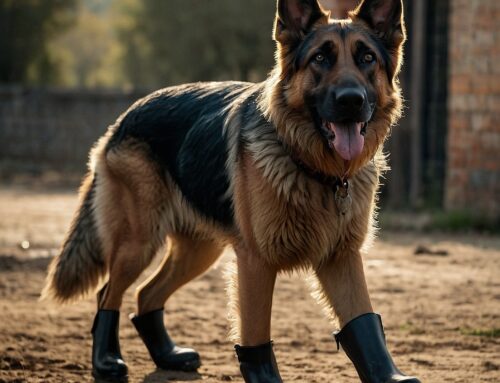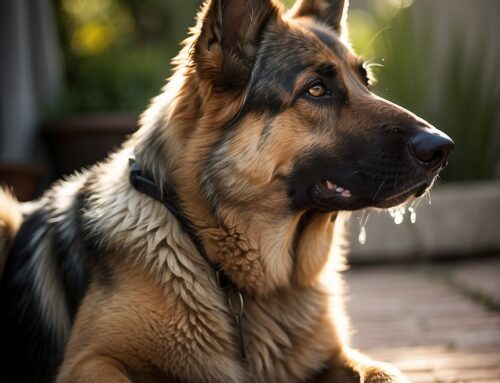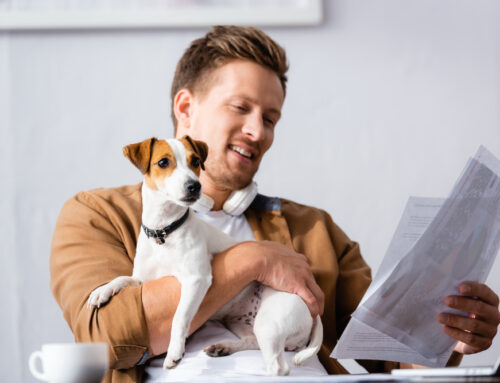One of the most important aspects of pet ownership is ensuring that your dog feels safe, comfortable, and secure in their environment. Dogs, like humans, thrive when your pet’s individual basic physical, mental, and emotional needs are met. We’ll explore practical tips on how to create a safe and harmonious environment for your dog to ensure they live a happy and healthy life.
Providing a Comfortable Safe Space
A designated, cozy comfortable place for your dog is essential for their sense of security and well-being. Much like humans, dogs appreciate having a place in the house to call their own where they can retreat and relax when needed.
Designated Resting Area as Your Dog’s Safe Space
Create a specific spot in your home where your dog can relax undisturbed. Whether it’s a corner of a room, a cozy crate, or a soft bed, having a designated area gives your dog a sense of belonging. Crate training, when done correctly, can be a great way to provide your dog with a secure den-like environment where they can feel safe. Make sure the area is quiet, away from heavy foot traffic or loud noises, and spacious enough for your dog to stretch out comfortably.
Appropriate Bedding
Ensure the bedding you choose for your dog is soft, durable, and the right size for them. Older dogs or those with joint issues may benefit from orthopedic or memory foam beds that provide extra support. Clean the bedding regularly to maintain hygiene and keep the space inviting for your dog. Additionally, offering a blanket or pillow with your scent can be provided as comfort items and ultimately reassurance, especially for dogs prone to separation anxiety.
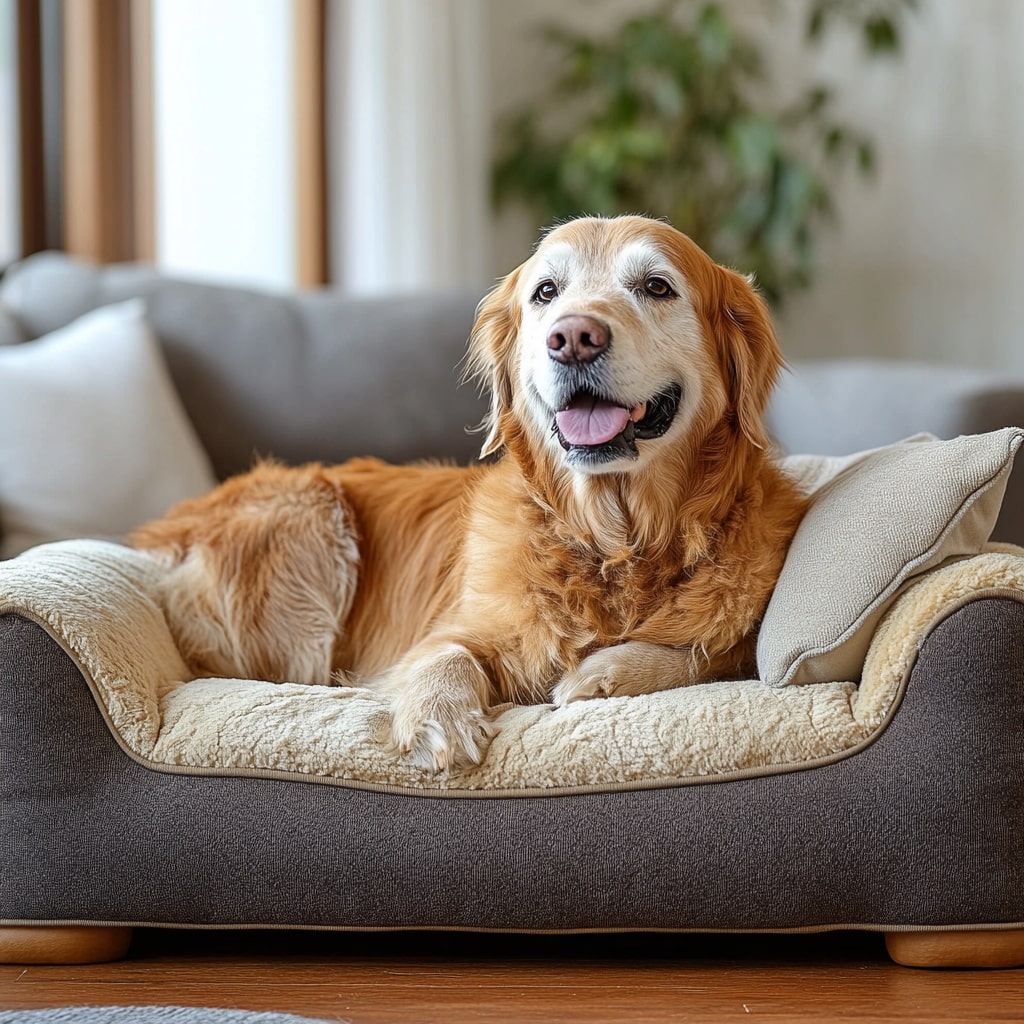
Establishing a Routine
Dogs are creatures of habit and thrive on structure in a suitable environment. Establishing a consistent daily routine helps reduce anxiety and uncertainty in your dog’s life.
Consistent Schedule
Establish a daily routine for feeding, walking, and playtime. Feeding your dog at the same time every day not only ensures they are well-nourished but also helps regulate their digestion. Regular walks, scheduled around the same time, give your dog something to look forward to, which can reduce restlessness or boredom during the day. You can even start incorporating Doggy Daycare into your routine for that extra consistency with socialization with other dogs and humans on a daily or weekly basis. Consistency in these activities helps your dog understand what to expect, which ultimately makes them feel more secure.
Training Sessions
Incorporating training sessions into your dog’s routine is crucial for their mental stimulation and behavior management. Positive reinforcement training, where you reward good behavior with treats or praise, helps build your dog’s confidence and solidifies their understanding of your expectations. Routine training also allows you to bond with your dog, fostering trust and a deeper connection.
Physical and Mental Stimulation
Ensuring your dog is both physically and mentally engaged is key to maintaining their overall well-being. Dogs with pent-up energy or boredom are more likely to exhibit destructive behaviors, so it’s essential to meet their need for activity and mental stimulation.
Daily Exercise
Different breeds have different exercise needs, but all dogs require regular physical activity to stay healthy. Whether it’s a brisk walk, a game of fetch, or a run in the park, exercise is crucial for your dog’s physical health and mental balance. Exercise is also a powerful tool for reducing anxiety and preventing behavioral problems. A well-exercised dog is more likely to remain calm, stress free and content when at home, minimizing the risk of destructive behavior.
Mental Challenges
In addition to physical exercise, dogs need mental stimulation to stay sharp and happy. Puzzle toys, treat-dispensing gadgets, and interactive games like hide-and-seek are great ways to engage your dog’s mind. You can also use simple training exercises or introduce new tricks to keep their brain active. Mental challenges not only help prevent boredom but also reinforce your bond as your dog learns to rely on you for entertainment and guidance.
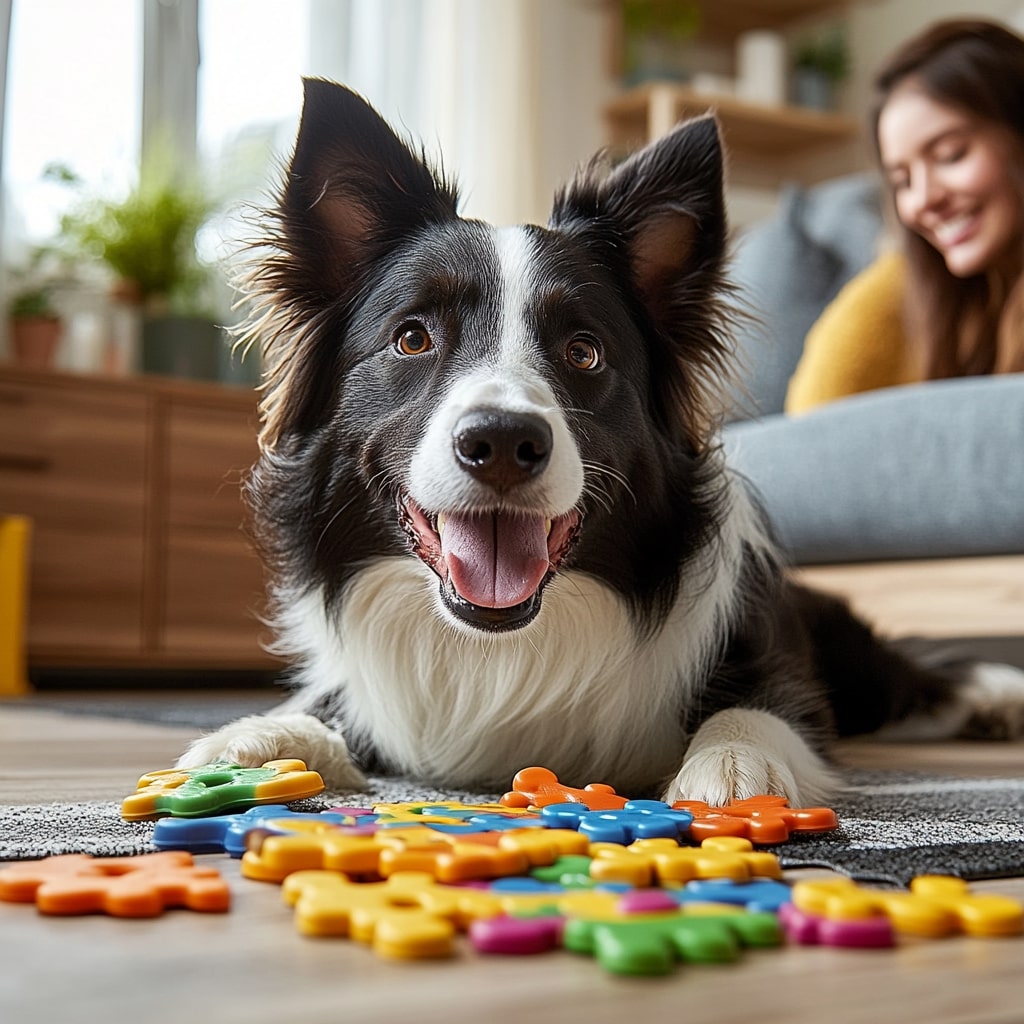
Socialization and Interaction
Proper socialization is crucial to ensuring your dog feels comfortable around different people, animals, and environments. A well-socialized dog is less likely to develop behavioral issues such as fear or aggression.
Positive Socialization
From a young age, introduce your dog to a variety of situations, such as meeting new people, other dogs, or visiting different places. Early and ongoing exposure helps your dog develop confidence in unfamiliar environments. However, socialization should always be done in a controlled, positive manner—introduce new experiences gradually to avoid overwhelming your dog and create positive associations with your furry friend. If your dog is older and has not been well-socialized, work with a trainer to ease them into new situations.
Supervised Playdates
Organizing playdates with other dogs is a great way to help your dog develop social skills. However, these interactions should be carefully supervised, especially if your dog is meeting new dogs for the first time. Look for signs of stress or discomfort, and always make sure the dogs are compatible in terms of play style and energy levels. Well-managed playtime helps your dog learn how to interact appropriately with others and can lead to positive, enriching relationships with fellow canines.
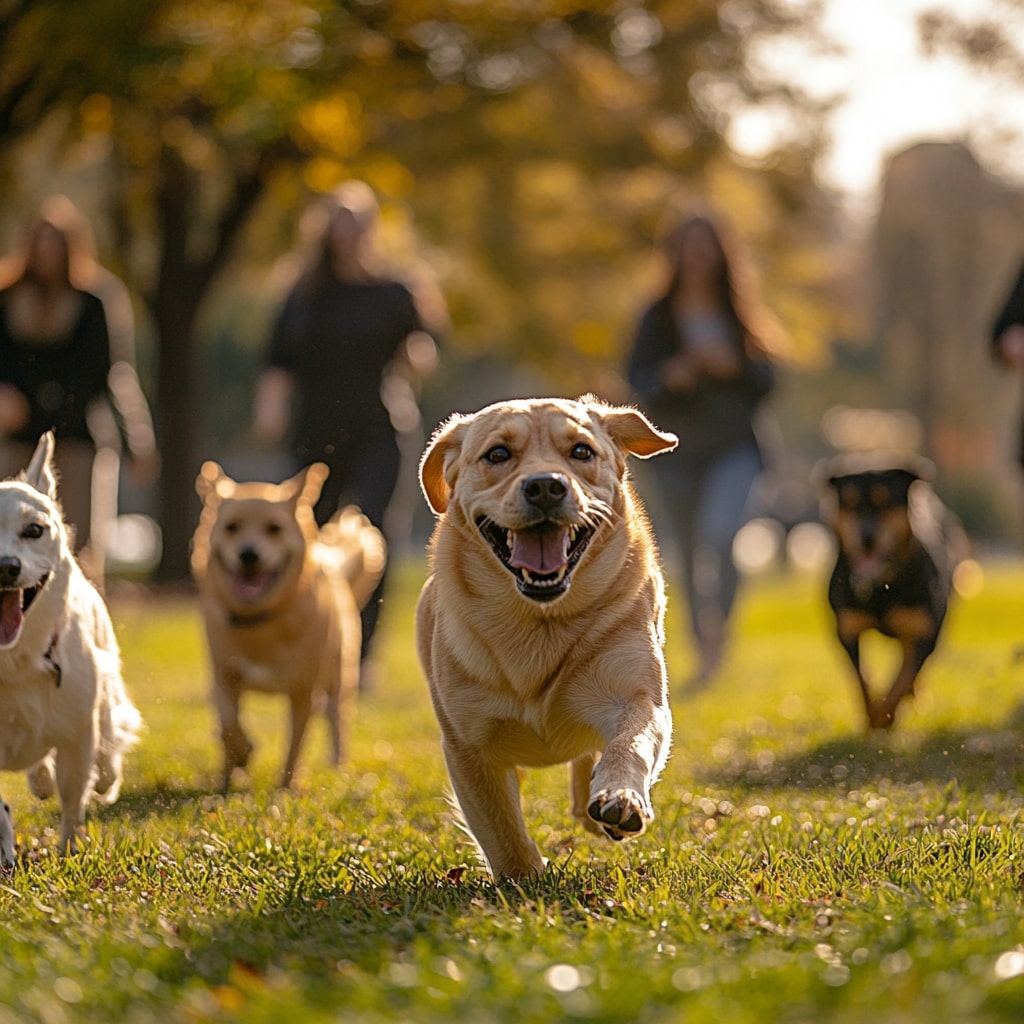
Ensuring a Safe and Secure Home Environment
Your home should be a safe space where your dog is free from harm. It’s important to “dog-proof” your living space to prevent accidents and protect your dog from potential hazards.
Dog Proof Your Home
To dog-proof your home, remove any harmful or dangerous items that your dog might access. Common hazards include:
- Electrical cords: Keep them out of reach or cover them with cord protectors.
- Toxic plants: Some houseplants, such as lilies, sago palms, or philodendrons, are toxic to dogs. Make sure any plants within reach are non-toxic.
- Cleaning products: Store household cleaners, detergents, and chemicals in locked cabinets or high shelves.
- Medications: Keep all human medications and supplements out of reach, as even small amounts can be toxic to dogs.
Also keep in mind of any extreme weather, like hot weather or even those cold nights, make sure they have the proper space to cool down or warm up. By taking these precautions, you can prevent accidents and create a safer home for your dog.
Secure Fencing
If you have a yard or outdoor area, make sure it is securely fenced and they have a toilet area they know is just for them, even if that means the whole backyard with secure fencing. This prevents your dog from wandering into traffic or encountering other potential dangers. Regularly inspect the fence for any gaps or weak spots that your dog could exploit. Additionally, never leave your dog outside unsupervised for long periods, as this can lead to boredom or anxiety.
Providing Proper Training
Proper training is key to a harmonious home environment. Well-trained dogs are more relaxed, easier to manage, and more likely to respond appropriately to commands, ensuring their safety and the safety of others.
Positive Reinforcement
Positive reinforcement training is one of the most effective methods for teaching your dog good behavior. When your dog follows a command or displays desirable behavior, reward them with good treats, praise, or affection. This encourages them to repeat the behavior and reinforces your bond. Avoid using punishment, as it can lead to fear and anxiety, which may result in behavioral issues such as aggression or withdrawal.
Teaching Boundaries
Setting clear boundaries and rules helps your dog understand what is expected of them. Whether it’s staying off the furniture, not jumping on guests, or learning to sit before going outside, establishing these rules early on promotes good behavior. Consistency is key—ensure all members of your household follow the same rules so your dog doesn’t get confused.
Attending to Health Needs
Keeping your dog healthy is fundamental to maintaining a safe and harmonious environment. A healthy dog is a happy dog, and regular health care is crucial in preventing illness and promoting longevity.
Regular Vet Visits
Routine veterinary check-ups ensure that your dog is in good health. Vaccinations, flea and tick prevention, and regular deworming are all essential for protecting your dog from common illnesses and parasites. Early detection of any health issues allows for timely treatment, reducing the risk of more serious complications down the road.
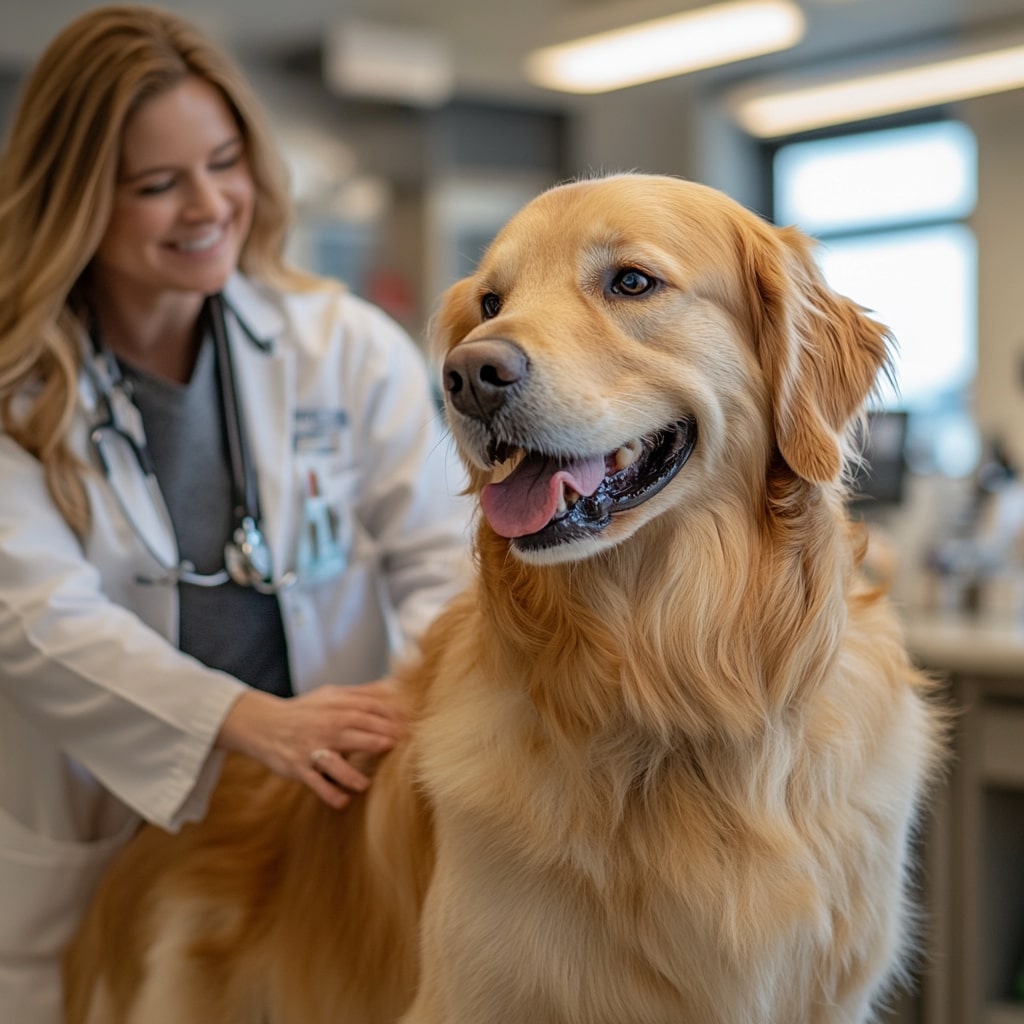
Proper Diet
A balanced diet is essential for your dog’s overall health and well-being. Make sure to feed your dog high-quality food that meets their nutritional needs based on their breed, age, and activity level. Consult with your vet to determine the best diet for your dog, and avoid overfeeding, as obesity can lead to various health problems such as joint issues, diabetes, and heart disease.
Creating a Calm and Positive Atmosphere
Dogs are naturally inquisitive and highly attuned to their environment, and a calm, positive atmosphere can go a long way in promoting their emotional well-being.
Minimizing Stress
Dogs are sensitive to loud noises, chaotic environments, and stress within the home. Minimize loud music, yelling, or sudden bursts of activity that could scare or stress your dog. If you live in a noisy area or have frequent visitors, consider providing your dog with a quiet room or space where they can retreat to relax and can be their dog’s safe space during stressful situations is ideal to help minimize their stress. Make sure to spend time with your pets to help create the best safe and calm space they want with you, this will not only help with stress reduction but overall create a safe environment for dogs with separation anxiety or just their overall well being.
Creating a Safe Environment For Dogs
Creating a safe and harmonious environment for your dog is key to ensuring they live a happy, healthy, and balanced life. By providing a comfortable space, establishing routines, ensuring mental and physical stimulation, and fostering a calm atmosphere, you can meet your dog’s needs and strengthen the bond you share. Every dog is unique, and tailoring these tips to your dog’s personality and needs will help you create the perfect environment where they can thrive. And if you’re looking for some extra help with their training, you can contact Performance K9 Training and Boarding to get a solid base training with their Basic Behavior Modification Program to help create a safe and harmonious environment for your pet. Sometimes you need to first get them with a professional trainer so you can create a safe space for them to learn new things and bring good habits back to your house for that calm and harmonious environment. Make sure to contact Performance K9 Training and Boarding today for a free consultation to see if your dog could benefit from extra training in a safe space.




